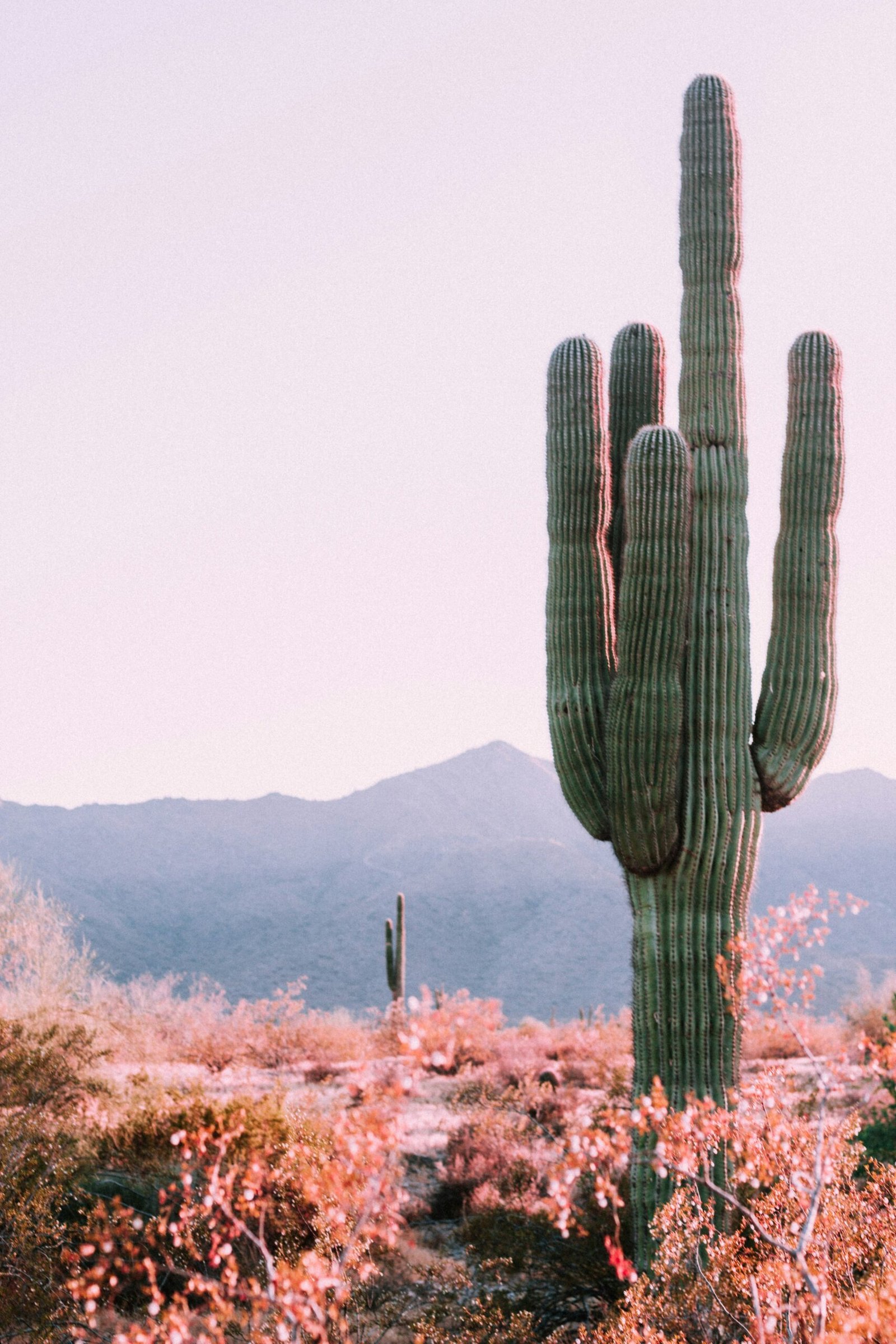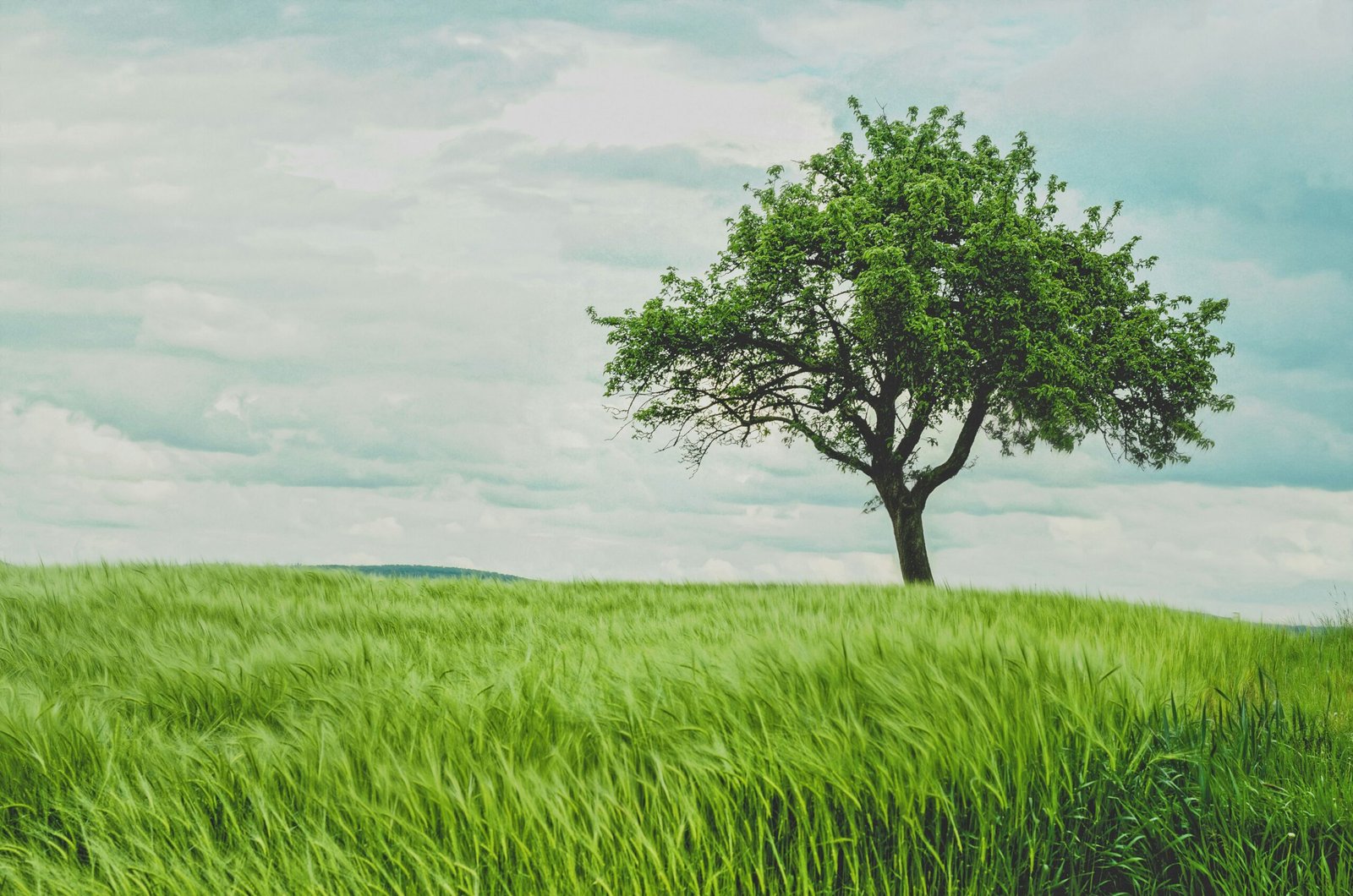When it comes to landscaping, many people think of lush green lawns and blooming flowers. However, desert plants offer a unique and striking alternative. These plants have evolved to survive in harsh, arid environments, and their adaptations make them not only resilient but also visually captivating.
One of the most iconic desert plants is the saguaro cactus. With its tall, branching arms reaching towards the sky, the saguaro is a symbol of the American Southwest. These cacti can live for over a hundred years and can grow to impressive heights. Their green stems are covered in spines, which help to protect them from predators and reduce water loss through evaporation.
Another stunning desert plant is the agave. These succulents come in a variety of shapes and sizes, with some species forming large rosettes of thick, fleshy leaves and others growing in tall, flower-like structures. Agaves are known for their striking architectural forms and can add a dramatic focal point to any landscape.
For those looking to add a splash of color to their desert garden, the desert marigold is an excellent choice. With its bright yellow flowers, this perennial plant brings a cheerful and vibrant energy to any space. The desert marigold is also drought-tolerant, making it a low-maintenance option for those living in dry climates.
In addition to their beauty, desert plants offer several practical benefits. Their ability to store water in their leaves, stems, or roots allows them to survive in arid conditions with minimal irrigation. This makes them an environmentally friendly choice for water-conscious gardeners. Furthermore, their deep root systems help to stabilize the soil and prevent erosion.
When incorporating desert plants into your landscape, it’s important to consider their specific needs. Most desert plants require well-drained soil and plenty of sunlight. They also benefit from occasional deep watering, rather than frequent shallow watering. Additionally, it’s essential to choose plants that are suited to your specific climate and microclimate, as some desert plants are more cold-tolerant than others.
Whether you live in a desert region or simply want to create a unique and visually striking landscape, desert plants offer a wide range of options. From the towering saguaro cactus to the delicate desert marigold, these plants bring a touch of exotic beauty to any outdoor space. So, why not embrace the beauty of the desert and transform your landscape into a stunning oasis?
Table of Contents
1. Agave
One of the most iconic desert plants, the agave is known for its striking rosette shape and sharp, succulent leaves. With over 200 species to choose from, agaves come in a range of sizes and colors. From the compact Agave parryi to the towering Agave americana, there is an agave for every landscape. These plants are drought-tolerant and require minimal maintenance, making them perfect for busy gardeners.
If you’re looking to buy agave plants online, we recommend checking out Nursery Kart. They offer a wide selection of agave plants and other desert species, all available for delivery right to your doorstep. Visit their website at www.nurserykart.in to explore their collection and find the perfect agave for your garden.
Agaves are not only prized for their beauty and resilience but also for their versatility. These plants have been used by various cultures for centuries for their practical and medicinal properties. For example, the sap of certain agave species can be fermented to produce the popular alcoholic beverage known as tequila. The leaves of the agave plant can also be processed to extract a fiber called sisal, which is used to make ropes, carpets, and other textiles.
When it comes to growing agaves, it’s important to choose the right variety for your climate and soil conditions. Agaves thrive in full sun and well-draining soil, so make sure to provide them with these optimal growing conditions. Additionally, agaves are known for their slow growth rate, so be patient as they establish themselves in your garden.
Agaves are also known for their ability to attract pollinators such as bees and butterflies. The tall flower stalks that emerge from mature agave plants are adorned with clusters of small, tubular flowers that provide a valuable source of nectar. These flowers not only benefit the agave itself but also support the local ecosystem by providing food for pollinators.
Whether you’re a seasoned gardener or just starting out, adding an agave to your landscape can bring a touch of desert beauty and resilience to your outdoor space. With their unique shapes, vibrant colors, and low maintenance requirements, agaves are sure to make a statement in any garden.
So why wait? Visit Nursery Kart today and explore their wide selection of agave plants. Transform your garden into a desert oasis with these stunning and versatile plants. With their online ordering and delivery service, it’s never been easier to bring the beauty of agaves into your home.
2. Yucca
Yuccas are another popular choice for desert landscaping. These versatile plants feature sword-like leaves and tall, dramatic flower spikes. With their architectural form, yuccas add a touch of elegance to any outdoor space. They are also known for their ability to withstand extreme temperatures and thrive in poor soil conditions.
If you’re considering adding yuccas to your landscape, Nursery Kart is a great place to start your search. They offer a variety of yucca plants, including the popular Yucca filamentosa and Yucca gloriosa. These two species of yucca are particularly well-suited for desert gardens due to their hardiness and adaptability. Yucca filamentosa, also known as Adam’s needle, is a clump-forming plant that produces tall flower stalks with creamy white blooms. It is highly resistant to drought and can tolerate a wide range of soil types. Yucca gloriosa, commonly referred to as Spanish dagger, is a striking plant with sharp, blue-green leaves and large clusters of white flowers. It is native to the southeastern United States and is capable of thriving in sandy, well-drained soils.
When selecting yuccas for your garden, it’s important to consider the specific requirements of each species. Some yuccas prefer full sun, while others can tolerate partial shade. Additionally, certain varieties may require more frequent watering, especially during the establishment phase. It’s always a good idea to consult with a knowledgeable nursery or landscape professional to ensure you choose the right yucca for your specific climate and growing conditions.
Once you’ve selected your yucca plants, it’s time to think about placement in your landscape. Yuccas can be used as focal points in a garden, planted in groups for a dramatic effect, or incorporated into mixed plantings for added texture and interest. Their bold, upright growth habit makes them ideal for creating visual impact and defining outdoor spaces. Consider planting yuccas near patios, entryways, or along pathways to take advantage of their striking form and impressive flower spikes.
In addition to their aesthetic value, yuccas also offer practical benefits in desert landscaping. Their dense foliage provides shade and shelter for smaller plants, helping to conserve moisture and create a microclimate that is more favorable to other desert-adapted species. Yuccas are also known to attract a variety of pollinators, including bees, butterflies, and hummingbirds, making them an excellent choice for gardeners interested in supporting local wildlife.
Overall, yuccas are a versatile and resilient choice for desert landscaping. Whether you’re looking to add visual interest to your outdoor space or create a low-maintenance garden that can withstand harsh conditions, yuccas are sure to deliver. With their striking form, impressive flower spikes, and ability to thrive in poor soil conditions, these plants are a true asset to any desert garden.
The desert marigold, also known as Baileya multiradiata, is a stunning perennial plant native to the southwestern United States. With its bright yellow flowers and silver-gray foliage, this plant adds a pop of color to any desert garden. It is highly drought-tolerant and attracts pollinators such as bees and butterflies. The desert marigold is a versatile plant that can thrive in a variety of soil types, making it a great choice for gardeners in the arid regions of the country. Its ability to withstand harsh conditions and still produce vibrant blooms makes it a favorite among desert garden enthusiasts.
If you’re looking to buy desert marigold plants online, Nursery Kart is a trusted source. They offer a variety of desert marigold plants, all of which are carefully grown and ready to thrive in your garden. Their collection includes different cultivars of Baileya multiradiata, each with its own unique characteristics. Whether you prefer a compact variety for a small garden or a taller variety for a focal point, Nursery Kart has options to suit your needs.
When purchasing desert marigold plants from Nursery Kart, you can rest assured that you are getting high-quality plants that have been well-cared for. The nursery takes pride in their growing practices, ensuring that each plant is healthy and ready to be planted in your garden. They use sustainable growing methods and prioritize the health of their plants, resulting in strong and vibrant specimens.
In addition to their excellent plant quality, Nursery Kart also provides detailed information about each desert marigold variety they offer. This allows you to make an informed decision about which plant will best suit your garden’s needs. Whether you are looking for a low-maintenance option or a showstopper that will steal the spotlight, Nursery Kart has the perfect desert marigold for you.
Once you have received your desert marigold plants from Nursery Kart, it’s time to start planning their placement in your garden. These plants thrive in full sun, so be sure to choose a location that receives at least six hours of direct sunlight each day. They also prefer well-draining soil, so consider amending your garden beds with compost or sand to improve drainage.
When planting your desert marigold, dig a hole that is slightly larger than the root ball of the plant. Gently loosen the roots and place the plant in the hole, making sure it is level with the surrounding soil. Backfill the hole with soil, firming it gently around the plant to eliminate any air pockets. Water the plant thoroughly after planting to help it establish its roots.
Throughout the growing season, be sure to provide regular water to your desert marigold plants. While they are drought-tolerant, they will still benefit from consistent moisture. Water deeply, allowing the soil to dry out slightly between waterings. Avoid overwatering, as this can lead to root rot and other issues.
As your desert marigold plants grow, they may benefit from occasional pruning to maintain their shape and promote bushier growth. This can be done in early spring or after the plant has finished blooming. Use clean, sharp pruners to remove any dead or damaged growth, as well as any branches that are crossing or overcrowding the plant.
In conclusion, the desert marigold is a beautiful and resilient plant that can bring a touch of sunshine to any desert garden. With its vibrant yellow flowers and silver-gray foliage, it is sure to be a standout in your landscape. Consider purchasing desert marigold plants from Nursery Kart to ensure you are getting high-quality specimens that are ready to thrive in your garden. With proper care and maintenance, your desert marigold plants will continue to brighten your garden for years to come.
Not only are barrel cacti visually appealing, but they also have a fascinating history and cultural significance. These plants have been used by Native American tribes for centuries for their medicinal properties and as a source of food and water. The Seri people of Mexico, for example, would harvest the fruit of the barrel cactus and use it as a vital source of hydration in the arid desert.
Aside from their practical uses, barrel cacti also play an important role in the ecosystem. Their spiky exterior provides protection against predators, and their flowers attract pollinators such as bees and birds. These plants have adapted to survive in harsh desert conditions, making them resilient and low-maintenance additions to any garden.
When it comes to caring for barrel cacti, it’s important to provide them with the right conditions. These plants thrive in well-draining soil and require plenty of sunlight. While they can tolerate drought, it’s crucial to water them sparingly and avoid overwatering, as this can lead to root rot. Additionally, it’s essential to protect them from frost during the colder months, as they are not frost-tolerant.
If you’re looking to create a desert-themed garden, barrel cacti can be paired with other succulents and desert plants to create a stunning landscape. Their unique shape and texture make them excellent focal points, whether planted in the ground or displayed in decorative pots. With their ability to store water, barrel cacti can also be incorporated into xeriscaping designs, which prioritize water conservation.
Whether you’re a seasoned gardener or just starting out, adding barrel cacti to your collection can bring a touch of the desert into your home or outdoor space. With their striking appearance and ability to thrive in challenging conditions, these plants are sure to captivate and inspire.
5. Desert Spoon
The desert spoon, also known as Dasylirion wheeleri, is a unique desert plant with long, narrow leaves and a rosette form. It is native to the arid regions of the southwestern United States and Mexico. The desert spoon is highly drought-tolerant and requires minimal maintenance, making it a popular choice for xeriscaping.
If you’re considering adding desert spoon plants to your landscape, Nursery Kart is a reliable source. They offer a variety of desert spoon plants, all of which are healthy and ready to thrive in your garden. Visit their website to browse their collection and bring the beauty of the desert spoon to your outdoor space.
The desert spoon is well-adapted to thrive in the harsh conditions of desert environments. Its long, narrow leaves are an adaptation to reduce water loss through transpiration. These leaves are also armed with sharp, toothed edges, which help to deter herbivores and protect the plant from damage.
In addition to its unique physical characteristics, the desert spoon also has a fascinating life cycle. It typically takes several years for a desert spoon plant to reach maturity and produce its first flower spike. Once it does, the plant will produce a tall, branching stalk covered in small, creamy white flowers. These flowers are highly attractive to pollinators, such as bees and butterflies, and can add a lovely touch of color to your garden.
Another interesting feature of the desert spoon is its ability to store water in its thick, fleshy roots. This allows the plant to survive prolonged periods of drought without access to water. In fact, the desert spoon can go months without rainfall and still maintain its vibrant green color and healthy appearance.
When it comes to planting desert spoon in your garden, it’s important to choose a well-draining soil that mimics the sandy, rocky conditions of its natural habitat. This will help prevent root rot and other moisture-related issues. Desert spoon plants also prefer full sun exposure, so make sure to select a location in your garden that receives at least six to eight hours of direct sunlight each day.
Overall, the desert spoon is a versatile and attractive plant that can add a touch of desert beauty to any landscape. Whether you’re looking to create a xeriscape garden or simply want to incorporate some unique plants into your existing landscape, the desert spoon is a great choice. With its low maintenance requirements and ability to thrive in harsh conditions, it’s no wonder that this plant is gaining popularity among gardeners across the country.





